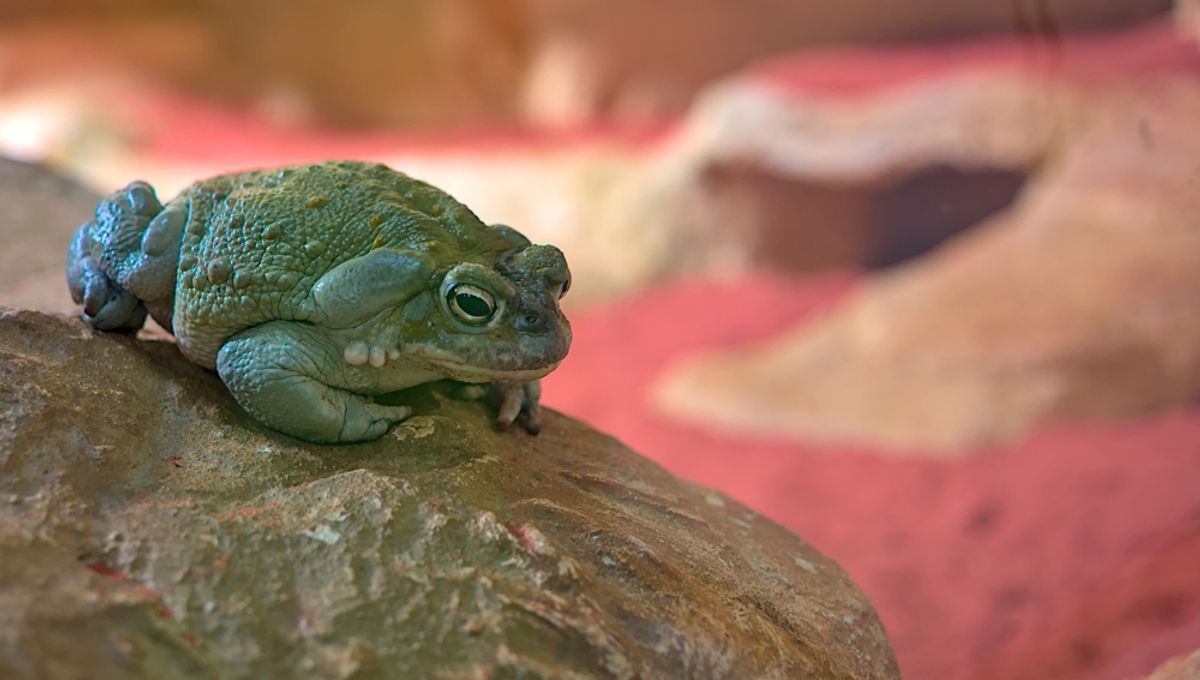
The milky discharge of the Sonoran Desert Toad contains what may be the most potent psychedelic compound on Earth, yet researchers are yet to figure out how the rotund little creature produces its mind-melting ooze. Seeking the source of the amphibian’s stupefying secretions, the authors of an as-yet un-peer-reviewed study pumped the stomachs of dozens of toads, revealing a weird and wonderful assortment of devoured items.
Known by its Latin name Incilius alvarius, the Sonoran Desert Toad is the only known animal that produces the psychedelic compound 5-MeO-DMT. When smoked, this substance generates a short-lived yet incredibly powerful trip that has been likened to entering an existential “void”.
While it’s unclear how the toad produces the compound, the study authors suspected that the animal’s diet – which consists of toxic ants and beetles – might hold some clues. They therefore flushed the stomach contents of 29 of the saucy little anurans living in and around Tucson, Arizona, and compared these to the bellied belongings of 21 other toads inhabiting the same region.
“We found ants and beetles, many of which possess chemical defenses, to be the dominant prey items for I. alvarius,” reveal the researchers. Some of the toads had also swallowed spiders and wasps, while one daring individual had dined on an Arizona bark scorpion, “whose sting is extremely painful and potentially lethal to humans.” Another, meanwhile, had chowed down on a bullet casing.
Interestingly, some of the ants in the toads’ diet were from the Pogonomyrmex genus, which contains numerous species that are known to produce psychedelic effects when eaten. However, the results of this study indicated that I. alvarius does not consume these ants in sufficient quantities to provide a major source of 5-MeO-DMT.
The researchers also noted that several non-psychedelic toad species were also found to have eaten the same ants, and that Sonoran Desert Toads from different environments have highly divergent diets, yet still produce 5-MeO-DMT in similar amounts. Overall, these findings “suggest that a direct dietary source of 5-MeO-DMT is unlikely in Sonoran Desert toads,” conclude the study authors.
Having ruled out ants, beetles, scorpions, wasps, and even bullets as the primary ingredient in psychedelic toad slime, the researchers are left to speculate on the origins of this trippy residue. Previously, it has been suggested that the animal may generate the compound using an enzyme called 5-Hydroxyindole-O-methyltransferase, and while the presence of this catalyst has not been confirmed in I. alvarius, the authors recognize that this could be the answer.
For now, though, all that we know for sure about Sonoran Desert Toads is that their numbers are dwindling due to excess harvesting of their psychedelic slime. So please don’t milk the toads.
The study is currently available as a preprint on BioRxiv.
Source Link: No One Knows How The Sonoran Desert Toad Produces Its Psychedelic Slime